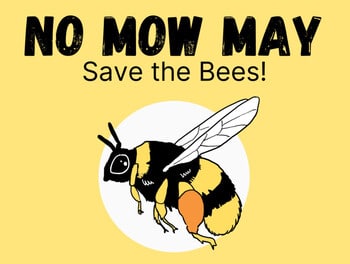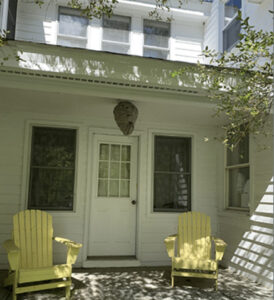
Maybe you’ve even resorted to hand pollination, as I’ve had to on a few occasions.
So I’ve become all about the bees, as witnessed by this wasps nest.
You can learn more about why I left them alone in this post which talks about the benefits of wasps, yellow jackets, and hornets.
And letting our lawn go wild for as long as we think our neighbors can stand it without one of them sneaking over in the middle of the night with a hand push mower to get rid of the unsightly blight upon our otherwise manicured street.
Bees love our dandelions, ground ivy, white and red clover, violets and all the other “weeds” that our lawn provides. And with the wildlife that depends on our pond, we’ve never used pesticides or fertilizers which could leach into the water. So, long story short, we’ve done everything we can to invite all of nature to thrive here. I believe our little wild kingdom is a testament to the success of our approach.
So, if you have not heard of the No Mow May movement, I invite you to learn more about it. Just think of what you could do with those extra hours you’re not riding a tractor or pushing a mower!
Excerpted from the New York Times:
The No Mow May initiative has a clear purpose: to save the bees — and not just honeybees (which are European imports), but also native bees, such as bumblebees, mining bees and sweat bees.
Bees are facing catastrophic declines. In North America, nearly one in four native bee species is imperiled, according to the Center for Biological Diversity, partly because of habitat loss, pesticide use, climate change and urbanization.
Lawns typically provide poor habitat for bees. But if allowed to flower, lawn weeds — perhaps better characterized as plants other than grass — can provide rare spring food for bees emerging from hibernation.
…Dr. Del Toro and Dr. Ribbons studied the impacts of No Mow May on Appleton’s bees. They found that No Mow May lawns had five times the number of bees and three times the bee species than did mown parks.



Related Posts: